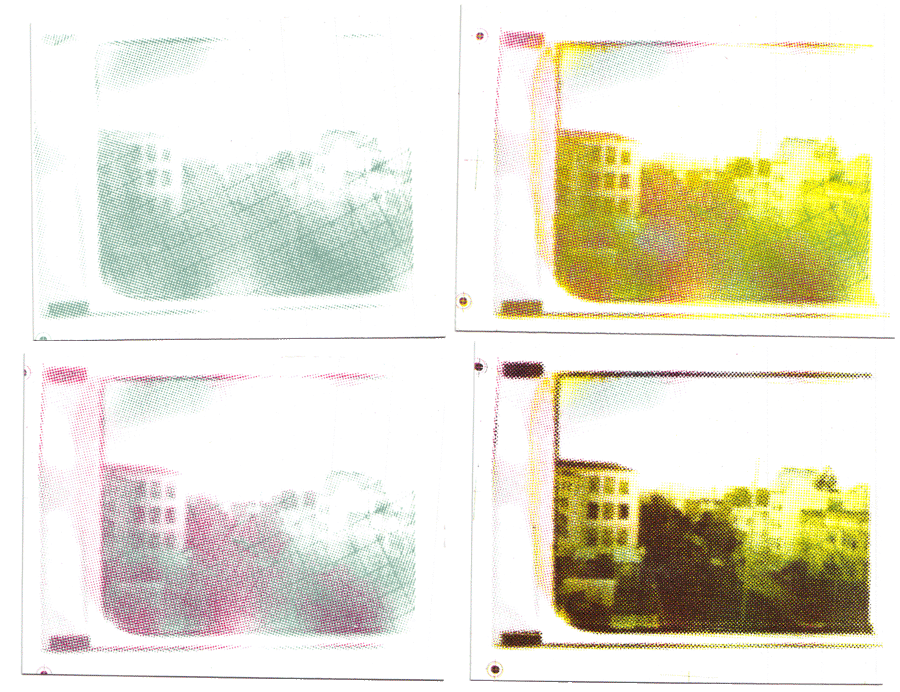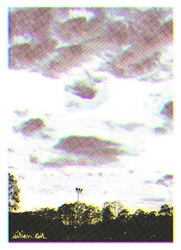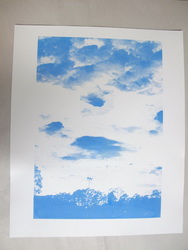I have been experimenting with a bastardized CMYK printing process. It interests my inner scientist: how do three essentially florescent colors manage to fool the eye into experiencing the entire spectrum, and how far can one take that illusion with screen printing?
I took three full days to conduct an initial study at the Cellspace silkscreen loft (It’s great: there are no workshops going on and so, with the exception of the vaguely territorial tabby cat, I have the whole place to myself). I took six different 669 peel-apart Polaroids from the first half of 2007 and reproduced them on a series of two hundred postcards.
The original photograph was scanned:

and digitally separated into it’s four base channels: cyan, magenta, yellow, and black. I forced each channel to exaggerated halftones and exposed each one on a separate screen.
I mixed my own batch of transparent cyan, magenta, yellow, and black and printed the four screens on the same postcard in that order. This example of Bartlett Street was probably the most successful of the six, though they all looked interesting. Here is the progression from one to four colors:

I can definitely move forward from here. I like the exaggerated halftones because the image and the colors only resolve themselves from a distance. On a more cerebral level, I like how it draws attention to the optical illusion of the printing process: at one glance its a cluster of dots and at another glance it is a photographic image. I want to experiment with making the halftone dots even bigger.

